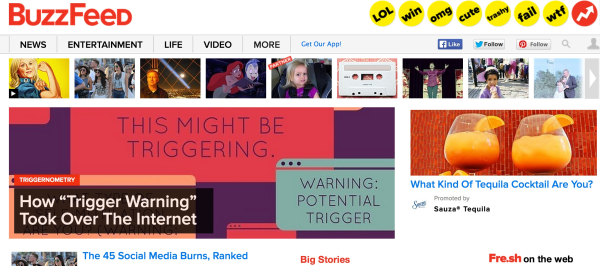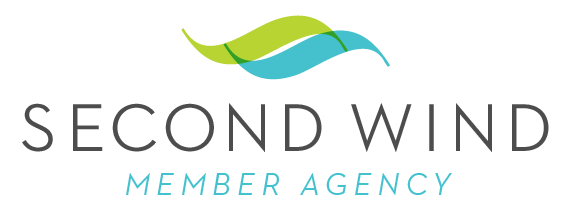If you have been around the advertising world lately, you probably have heard the term "native advertising" quite a bit. Conversations around the legitimacy and effectiveness of this new mode of advertising have taken our industry by storm in the last few years. What is native advertising, is it a good media idea for brands and a viable ad offering for publishers? This blog will attempt to answer those questions as I explore the risks and potential rewards of marketing this way.
Although this is a fairly new term, first coined by Fred Wilson in 2012 - the concept has been around awhile. Appearing as paid advertorial in print publications, or product placement on TV, the concept is a brand paying to appear in the natural environment of the medium of choice but usually clearly delineated as paid promotion. Native though is used to describe this type of advertising on the web. The goal with native on the web is to make interactive ads better, moving them from just banners on the top or side to in-stream among the content of the site, making them intrusive all to increase user engagement. Examples run the gamut of Sponsored stories and Tweets on Facebook and Twitter; to promoted stories on BuzzFeed and Yahoo; or even sponsored playlists on Pandora.
Now to be honest, I have sold paid advertorial in my past life as a print sales rep, and I was totally okay with it. The client would buy ad space and fill it with an article that they wrote and anyone who turned to that page clearly saw it as paid promotion because above the headline in a readable font it said "paid advertisement" or something of that nature. But when it comes to the web especially when it comes to paid content on a publisher site, I feel it's more of a gray area because the nature of the web makes it difficult to discern what's promotional and what's not. When anyone can publish a website and hawk their wares, how do you know a source is credible? And if you are a credible source, will it hurt your editorial integrity to feature promotional stories prominently on your homepage?
As native advertising has evolved, the Interactive Advertising Bureau (IAB) as the standard-setting association in the industry, saw the need to set some guidelines that we can all agree on to eliminate confusion and allow this new option to flourish. So they created a Native Advertising Task Force that met last December and grappled with how to categorize all of the offerings. The result is the Native Advertising Playbook.
I recommend you read through it. As you do, you'll notice that they have a few examples that I would not have classified as native advertising - including paid search and e-commerce site recommendations. But either way, I do like that they agree effective native units must feel to the user that they belong in the environment AND the units MUST clearly and prominently disclose that they are paid so the user can easily distinguish between it and editorial content (#5 in Playbook).
It makes sense why this mode has emerged when you look at low CTRs for banner ads, or the feed formats that sites have taken, especially social sites. Plus, as mobile web becomes even more prominent, advertisers must find new ways to interact and we all know mobile banners are underwhelming, both in performance and experience. One could even argue that inventions like the DVR have made consumers accustomed to consuming content without ad disruption. And I also understand that publishers are struggling to generate revenue however they can online. But again my concerns are with publishers eroding their editorial integrity with these units, which may lead to lower traffic - and on the advertiser side, a brand being hurt by doing native in an unnatural or intrusive way.
So I've shared the risks I see - but native also holds a lot of potential for brands to engage with consumers in meaningful ways if done the right. We at McCulloch+Company are big fans of marrying the creative message with the medium it appears in, (some may even argue the medium is the message) like most of the good media ideas we share on this blog. Native holds huge potential to do this, but just as IAB spelled out, it must match the feel and function of the environment. A good example of this is a Sauza Tequila on BuzzFeed.com. Yesterday was Cinco di Mayo, right, so naturally at the top of homepage, Sauza promoted a quiz to discover what type of Tequila cocktail you are:

With images and clever quips, the quiz was a spot-on and timely execution on BuzzFeed.
Another example I've seen recently came from a Maker's Mark ad on Reddit.com. Leading up to the Kentucky Derby, the brand posted on the site encouraging users to submit race horse names for a chance to be included in a post on the homepage last Friday. Preference of course went to alcohol- or reddit-related names. The community responded with over 1,000 posts, far exceeding advertiser's expectations.
Reddit is an example of a community in which native advertising is hard. The community recognizes imposters and will make you pay. An uneducated brand that does know the culture of reddit may experience a backlash. Just ask Taco Bell or Dominos.
That's the risk again for brands. If you venture into these new native waters, make sure you understand the rules of the community - don't try too hard or have a voice that is inauthentic to the environment. This requires smarter creative, and dedicated content teams, perhaps for each platform - the days of advertorial being an after-thought are over because consumers will not engage if it is weak or a not-thought-through execution.
So is it a #GoodMediaIdea or a bad one? I suppose the answer is - it depends. On the goals, the site, the product - but regardless of those factors, one should make sure the mode matches the medium and lifts the brand of both product and publisher alike.


